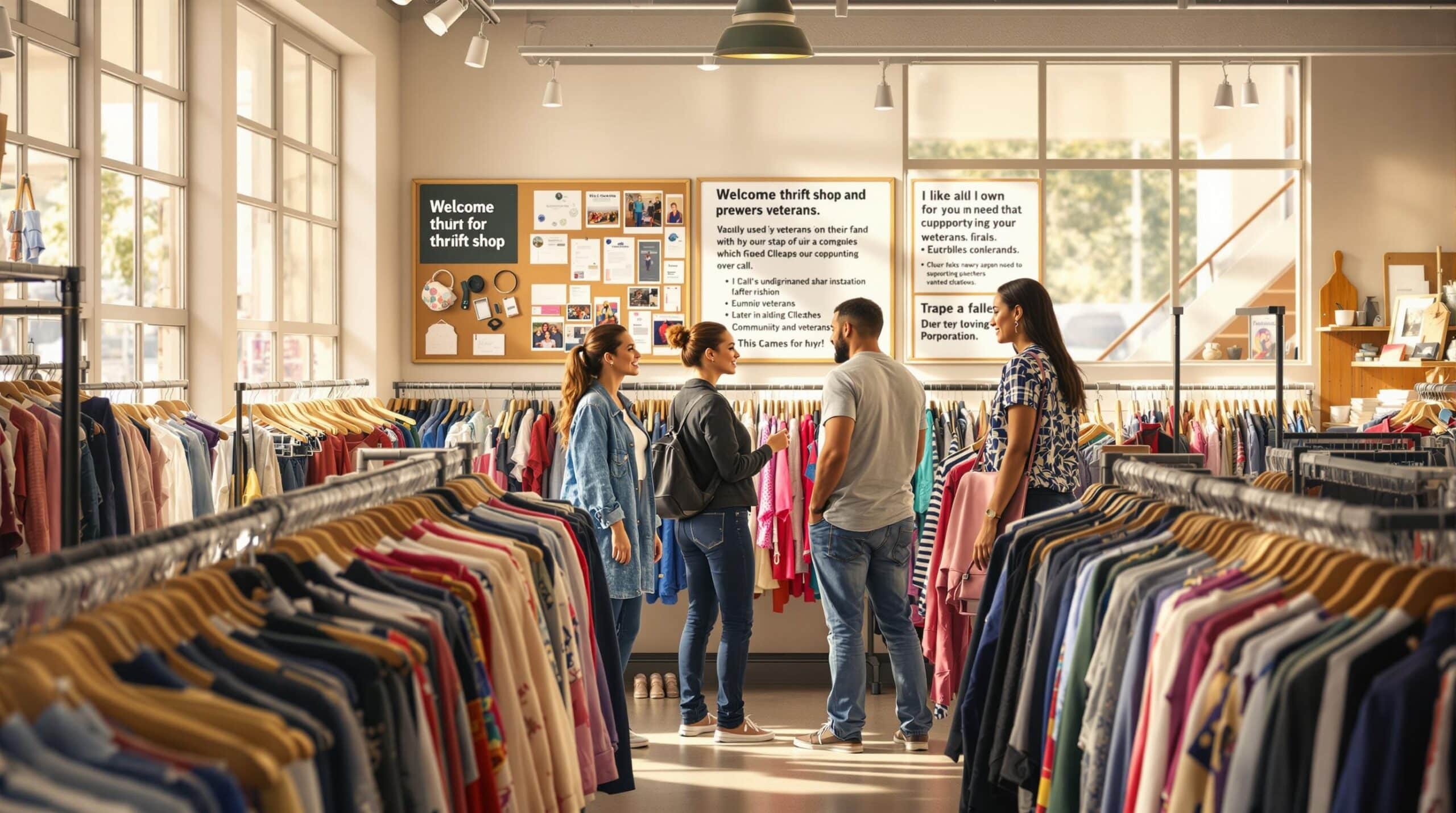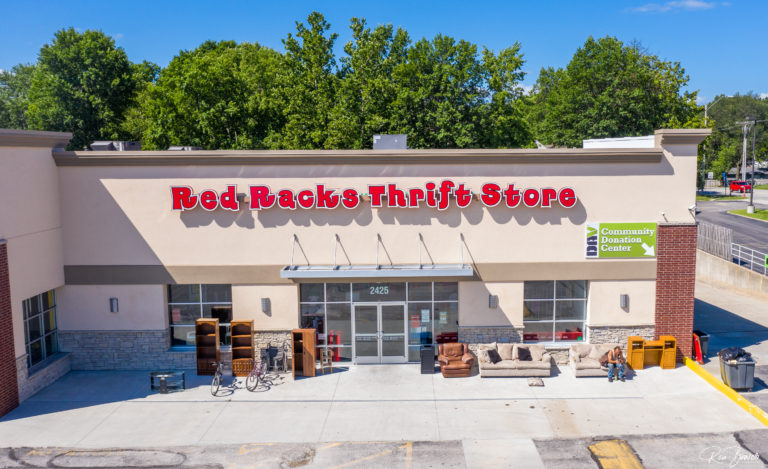
Thrift shopping saves you up to 87% compared to retail prices. Whether you’re buying clothes, household items, or books, thrift stores offer massive discounts while supporting local communities and reducing waste.
Key Savings at Thrift Stores:
- Clothing: $8 vs. $40 at retail (80% savings)
- Household Items: $5 vs. $25 (80% savings)
- Books: $2 vs. $15 (87% savings)
By shopping secondhand, you can find quality items for less, help the environment, and even support causes like veteran programs. Frequent visits and smart shopping strategies can help you snag the best deals and hidden treasures.
| Category | Thrift Store Price | Retail Price | Savings |
|---|---|---|---|
| Clothing | $8 | $40 | 80% |
| Household Items | $5 | $25 | 80% |
| Books | $2 | $15 | 87% |
Shopping thrift not only saves money but also reduces waste and supports local communities. Dive into the full article for tips on how to maximize your thrift shopping experience!
Cost Comparison: Thrift vs. Retail
If you’re looking to save money, here’s how thrift store prices stack up against retail in three main categories:
- Clothing: Thrift averages around $8, compared to $40 at retail stores – a massive 80% savings.
- Household Items: Pick up items for about $5 at a thrift store versus $25 retail, saving you 80%.
- Books: Thrift stores offer books for just $2, compared to $15 at retail, which is an 87% discount.
Thanks to donated goods and lower operating costs, thrift stores typically offer prices that are 70–85% cheaper than retail.
Now, let’s take a closer look at whether thrift store quality matches these savings.
Item Quality and Worth
After comparing prices, it’s time to see if thrift store quality measures up to those savings.
Thrift Store Quality: What to Know
Thrift stores often carry well-made items at a fraction of their original price. Around 16–18% of Americans shop at thrift stores each year, contributing to $4 billion in apparel sales. Many of these items are barely used, including returns from buyers who changed their minds, and are available at 50–80% off retail prices.
Now, let’s look at ways to get the most value out of thrift shopping.
Get the Best Deals
Here are some tips to make your thrift shopping more effective:
- Markdowns: Many stores reduce prices by 20% every 30 days for unsold items.
- Pick the Right Location
Stores in wealthier neighborhoods often receive more high-end brand donations. - Shop at the Right Time
Find out when your local store restocks or go early in the day to snag the newest items. - Check for Quality
Take a close look at seams, zippers, buttons, fabrics, and electronics. Make sure sets are complete and everything works as it should.
How to Save More at Thrift Stores
Want to stretch your dollar even further at thrift stores? A few smart strategies can help you snag the best deals.
Tips for Smarter Shopping
Here are some ways to maximize your savings:
- Focus on high-value finds like vintage clothing, designer brands, unique home decor, rare books, shoes, baby gear, and textbooks. These items often come at a fraction of their original price.
- Check items carefully. Look for authentic brand details in stitching and labels, test zippers and buttons, ensure electronics work, and confirm sets are complete. Comparing prices online can also help you spot a great deal.
Pair these approaches with consistent shopping habits to get the most out of your trips.
Why Frequent Visits Matter
Stopping by thrift stores regularly can make a big difference.
Frequent visits let you stay ahead of restocks and refine your ability to spot hidden gems. This means you’ll have a better chance of finding designer pieces, rare books, and one-of-a-kind home decor before anyone else.
sbb-itb-ad405ba
Local Impact of Thrift Shopping
Thrift shopping goes beyond saving money – it supports local communities and helps cut down on waste.
How Red Racks Supports Veterans
Since 1958, Red Racks Thrift Stores, run by Disabled American Veterans, has used its proceeds to assist veterans in need. Every purchase helps fund essential services like medical care, job training, and housing support.
Cutting Waste by Reusing
Thrift shopping disrupts the “buy, use, and toss” cycle. For instance, producing a single cotton shirt uses more than 700 gallons of water. By buying secondhand, shoppers extend the life of items, reduce the need for new production, keep textiles out of landfills, and cut carbon emissions. Donating quality items to Red Racks not only supports veteran programs but also helps declutter homes and reduce waste in the Kansas City area.
Final Thoughts: Why Choose Thrift
Thrifting at Red Racks means spending less – think $8 instead of $40 on clothing or $2 instead of $15 on books – while making a positive impact. Your purchases fund Disabled American Veterans (DAV) programs and help reduce waste by giving products a second life.
Every item you buy not only saves you money but also contributes to vital services for veterans, including medical care, job training, and housing assistance. Plus, it’s a simple way to minimize waste and make more sustainable choices.
With Red Racks, you get more for your money, support veterans, and help the planet all at once.
FAQs
How can I check the quality of items at a thrift store before buying?
To ensure you’re getting quality items at a thrift store, take a close look at each piece before purchasing. Check for signs of wear like stains, tears, or missing parts, and inspect the stitching, fabric, or materials for durability. Well-made items often have sturdy construction and attention to detail.
For clothing, feel the fabric and check the tags for care instructions or high-quality brands. When it comes to household items, look for solid craftsmanship and test any mechanical parts to make sure they work. Taking a few extra minutes to examine each item can help you find great deals that will last.
How can I find valuable items when shopping at thrift stores?
To uncover valuable items at thrift stores, focus on areas with hidden gems like vintage clothing, luxury brands, and unique home decor. Look for standout pieces such as designer labels, retro styles, or high-quality materials that can be resold or added to your wardrobe. In home decor, keep an eye out for vintage glassware, ceramic dishes, or antique silverware that bring character to your space.
For toys, search for Lego sets, classic board games, or discontinued collectibles, as these often hold significant value. When browsing jewelry, take the time to inspect items closely and learn to identify genuine gemstones and precious metals. Patience and attention to detail can help you spot treasures among the shelves!
How does shopping at thrift stores help protect the environment?
Shopping at thrift stores is an eco-friendly choice that benefits the environment in several ways. By purchasing secondhand items, you help reduce the demand for new production, which lowers the carbon footprint of industries like fashion. This also conserves natural resources by extending the life of existing items, reducing the energy and materials required for manufacturing.
Additionally, thrifting keeps usable goods out of landfills, reducing waste and minimizing environmental pollution. It’s a simple way to make a positive impact while saving money and discovering unique finds.





